How about recreating Ikameshi, one of Japan’s most popular ekiben (bento boxes sold at train stations), in your own kitchen? Tender squid simmered in a sweet and savory sauce, paired with chewy rice, delivers a rich flavor and a satisfying experience with every bite.

Jump to:
What is Ikameshi?
Ikameshi is a Japanese dish made by stuffing rice into squid and simmering it in a sweet, soy-based sauce. “Ika” means squid, and “meshi” refers to rice. Originating from Mori Town in Hokkaido, Japan’s northernmost region, it is especially famous in Japan as an ekiben—a type of bento (lunch box) sold at train stations.
The origins of this dish date back to 1941, when a local shop called "Abe Shoten" created it using squid, which was abundant at the time, to make a satisfying meal that required less rice. During the war, rice—the staple food of the Japanese—was scarce, so when ikameshi was sold on trains, it quickly gained a reputation for being hearty and filling.
Later, ikameshi was entered in a national ekiben competition hosted by a department store, where it became a huge success—winning first place in the second competition and then holding the top spot for the next fifty years.
Tender squid simmered in a sweet and savory sauce, paired with the chewy texture of the rice inside, create a perfect combination. Once you try it, its unique flavor is something you won’t forget.
Today, ikameshi is enjoyed throughout Japan as a beloved squid dish. Try making it in your own kitchen as well.

How to clean squid
Making ikameshi starts with cleaning the squid. Can you find pre-cleaned squid in your area? Even if you can't, cleaning squid is surprisingly easy, so I encourage you to give it a try.
Here is how to do it:
- There is a part just above the eyes where the mantle and tentacles of the squid connect; gently separate them with your fingers.
- Hold the mantle and tentacles in your hands, and carefully pull them apart.
- Remove the cartilage from inside the mantle and rinse out the cavity.
- Cut off the portion just below the squid's eyes.
- With your fingers, remove the beak located at the base of the tentacles, along with the tough parts of the suckers.
- Slit open the tube-like part at the base of the tentacles.
- Line up the tentacles and trim the tips so that they are all the same length as the shortest one.
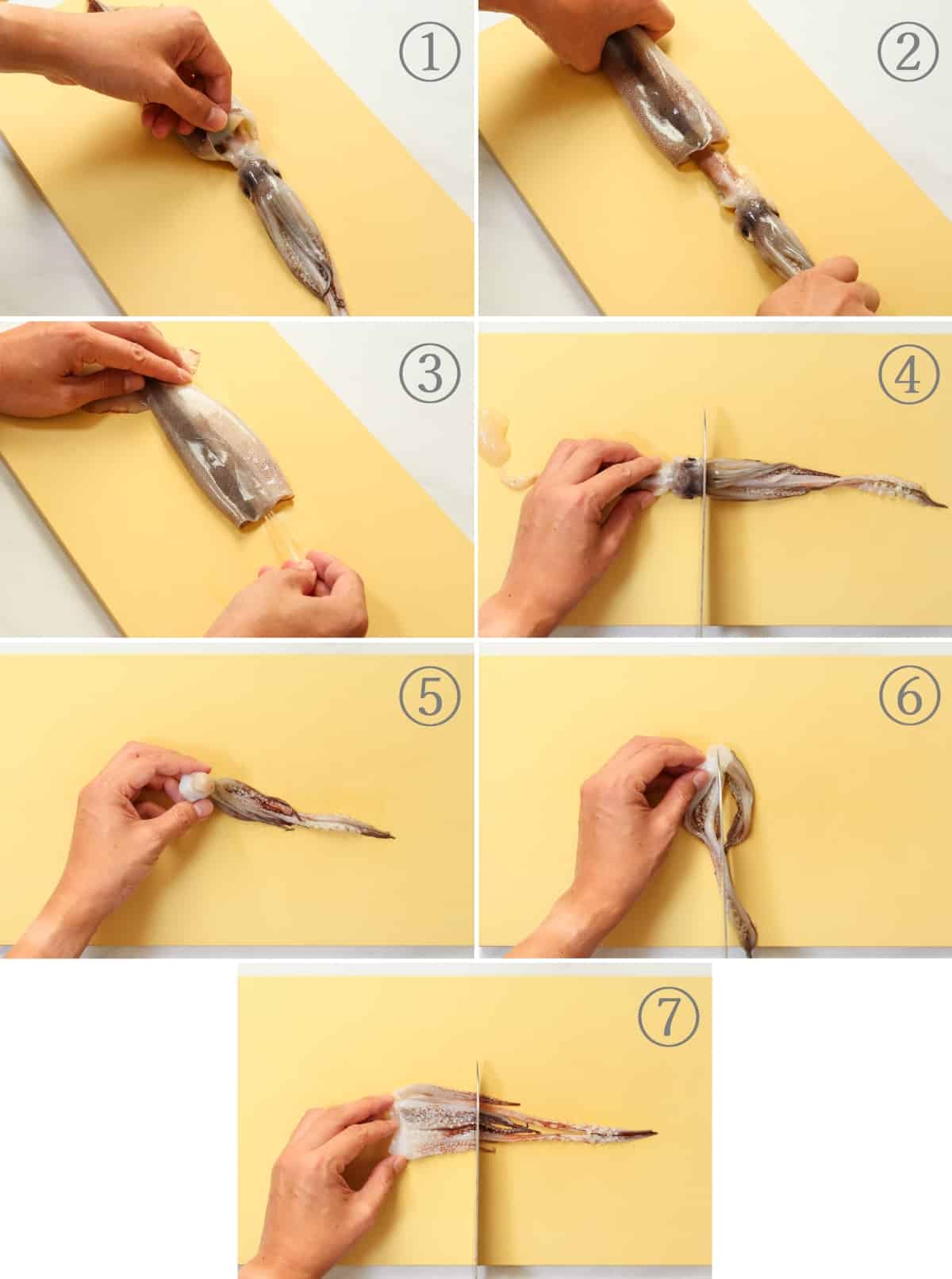
That's it for preparing the squid. For cooking, you will use the mantle with the fins attached. The tentacles can either be simmered together with the ikameshi, or chopped and mixed into the rice used for it. It is not necessary to remove the skin for this dish.
As for the squid itself, it is best to use ones with mantles (including fins) about 8 inches (20 cm) long. Keep in mind that larger squid tend to become a bit tough when cooked as ikameshi.
Stuffing the squid with rice
Once the cleaned squid is ready, the next step is to stuff it with rice.
For the rice, you can use either glutinous rice alone or a blend of glutinous rice and regular Japanese short-grain rice. Using only glutinous rice tends to result in a texture that is a bit too soft, so I personally recommend mixing the two for a nice balance of chewiness and tenderness. That said, if you prefer a softer texture, using just glutinous rice is perfectly fine.
When stuffing the squid, fill only about one-third of the body with rice. It might seem like there isn’t enough, but that is actually correct. The rice will expand as it cooks. Be careful not to overfill the squid, as the rice might not expand fully and remain hard, or the squid might burst during cooking.
Once you have finished stuffing it, secure the open end of the squid with a toothpick (or bamboo skewer) to keep the rice from spilling out. Now, you are ready to move on to simmering the squid.
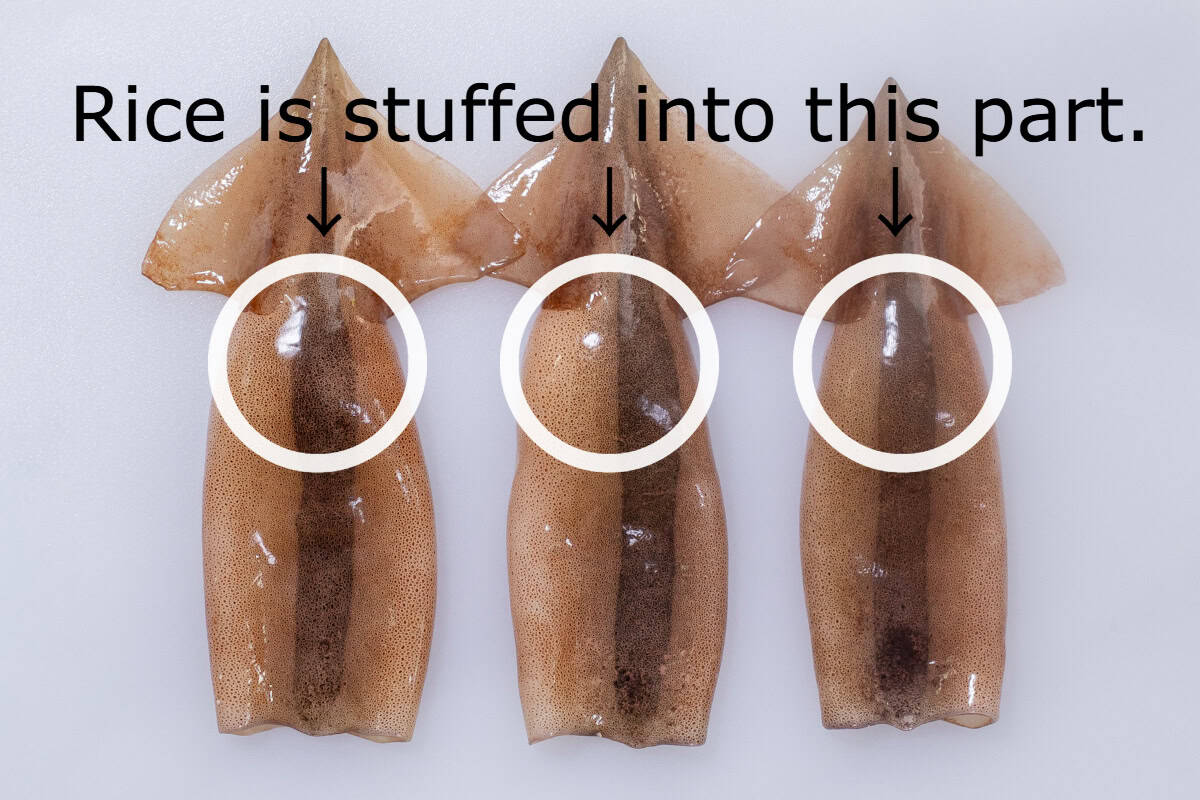
Simmering the squid in two stages
The squid is simmered in two stages.
First, parboil it for about 20 minutes. This step helps remove any scum and unpleasant odors from the squid.
Next, discard the water and simmer the squid in a mixture of mirin, sugar, soy sauce, and water for another 20 minutes. You can skip the parboiling step and cook the squid directly in the seasoned liquid, but parboiling first results in a cleaner, more refined flavor without any unwanted aftertaste.
When simmering, it is best to use an otoshi-buta (drop lid). An otoshi-buta is a lid that sits directly on top of the ingredients in a pot or pan. Placing the lid directly on the squid allows the cooking liquid underneath to circulate more evenly, resulting in more uniform cooking.
Commercial versions are available, but you can easily make one yourself by simply poking a large hole or several small ones in a sheet of aluminum foil, as shown in the photo below. The holes help prevent the otoshi-buta from floating up due to steam pressure.
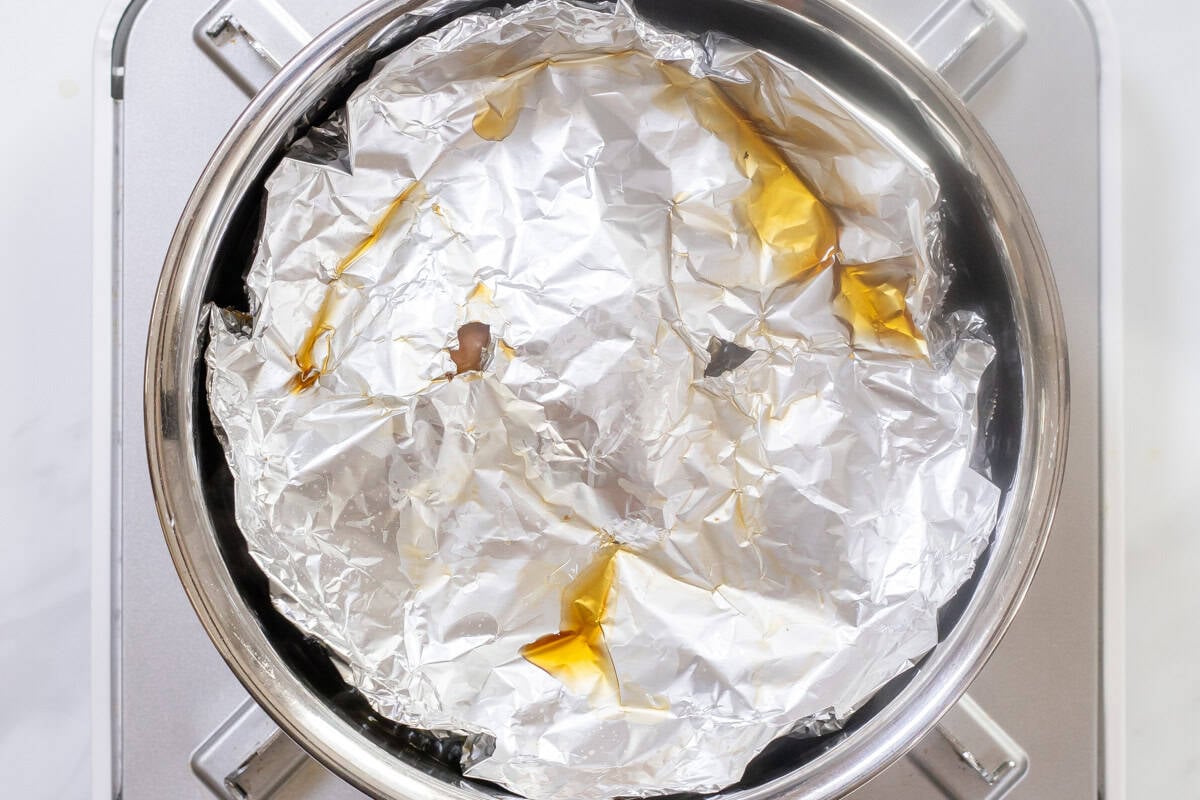
Serving and enjoying Ikameshi
Once you have finished simmering the squid, your ikameshi is ready to serve.
It is delicious when freshly made, but letting it sit in the cooking liquid for a while allows the flavors to soak in even more, making it even tastier. No wonder it is such a popular ekiben—it tastes great even when cold.
You can dig right in, or slice it into bite-sized pieces for easier eating—whatever suits your style. Enjoy your ikameshi however you like!

📋Step-by-step recipe
Equipment
- otoshi-buta (drop-lid) (You can easily make one by following the instructions above. If that seems like too much trouble, you can simply use a regular lid instead.)
- toothpicks or bamboo skewers
Ingredients
- 3 cleaned squid (It is best to use ones with mantles, including fins, about 8 inches (20 cm) long. For instructions on how to prepare squid, please refer to the section above titled "How to Clean Squid.")
- 1 oz glutinous rice (sweet rice) (adjust depending on the size of your squid)
- 1 oz regular Japanese short-grain rice (adjust depending on the size of your squid)
- 1 tsp mirin (for the rice)
- 1 tsp soy sauce (for the rice)
Cooking liquid:
- 2 Tbsp mirin
- 2 Tbsp sugar
- 5 Tbsp soy sauce
- 2 cups water
Instructions
🕒 Total: 2 hrs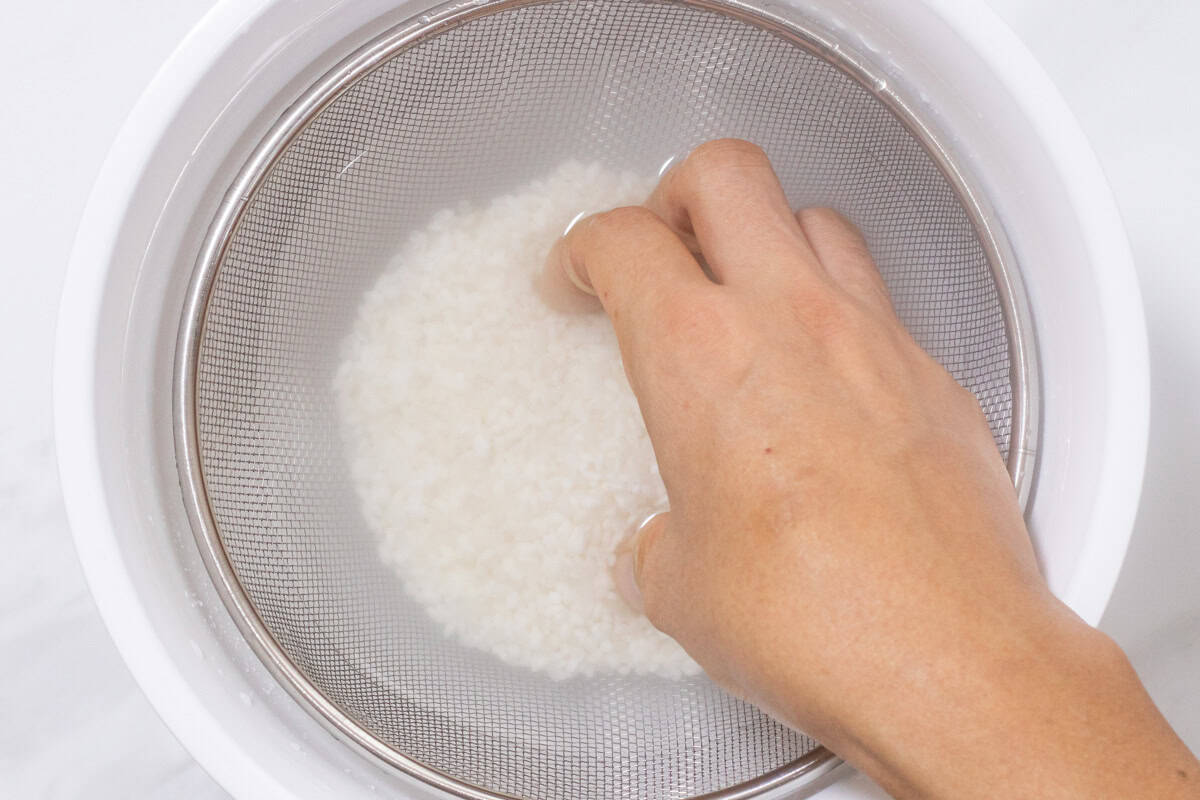
Step 1
Place a sieve over a bowl, add glutinous rice and short-grain rice, and rinse them with water. Repeat this process several times, changing the water each time.
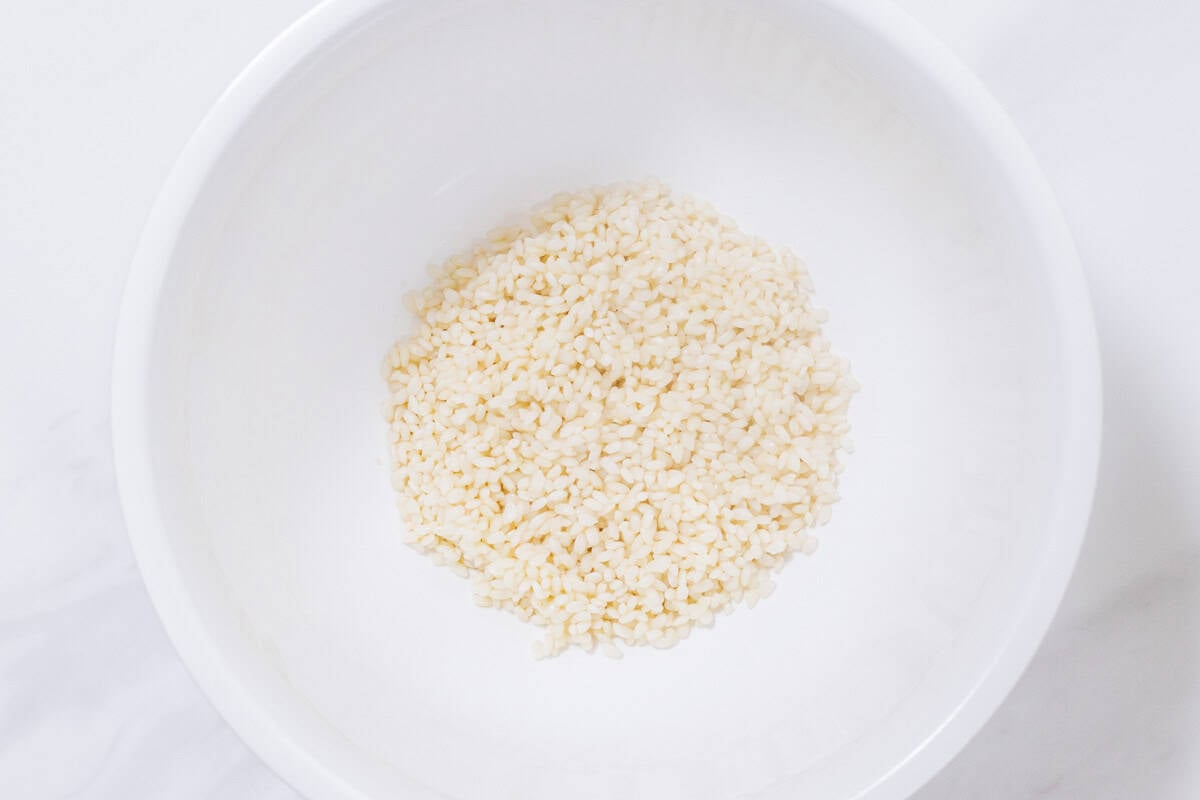
Step 2
Soak the rinsed rice in a bowl of water for at least 1 hour. Then, drain it well and mix it with mirin and soy sauce.

Step 3
Rinse the inside of the cleaned squid under running water. Stuff each squid with the rice, filling it about one-third full. (The rice will expand as it cooks, so this is just the right amount.)
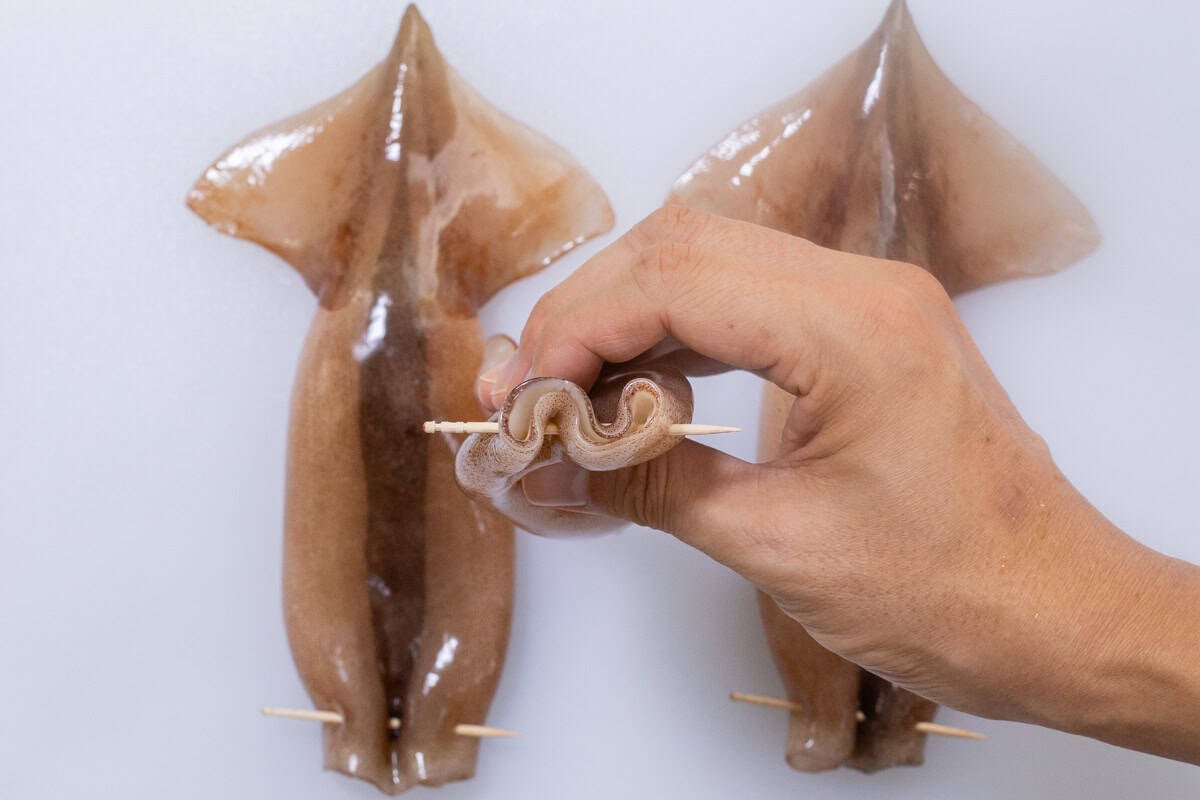
Step 4
Secure the open end of each squid with a toothpick (or bamboo skewer), weaving it through as if sewing, to keep the rice from spilling out while cooking.
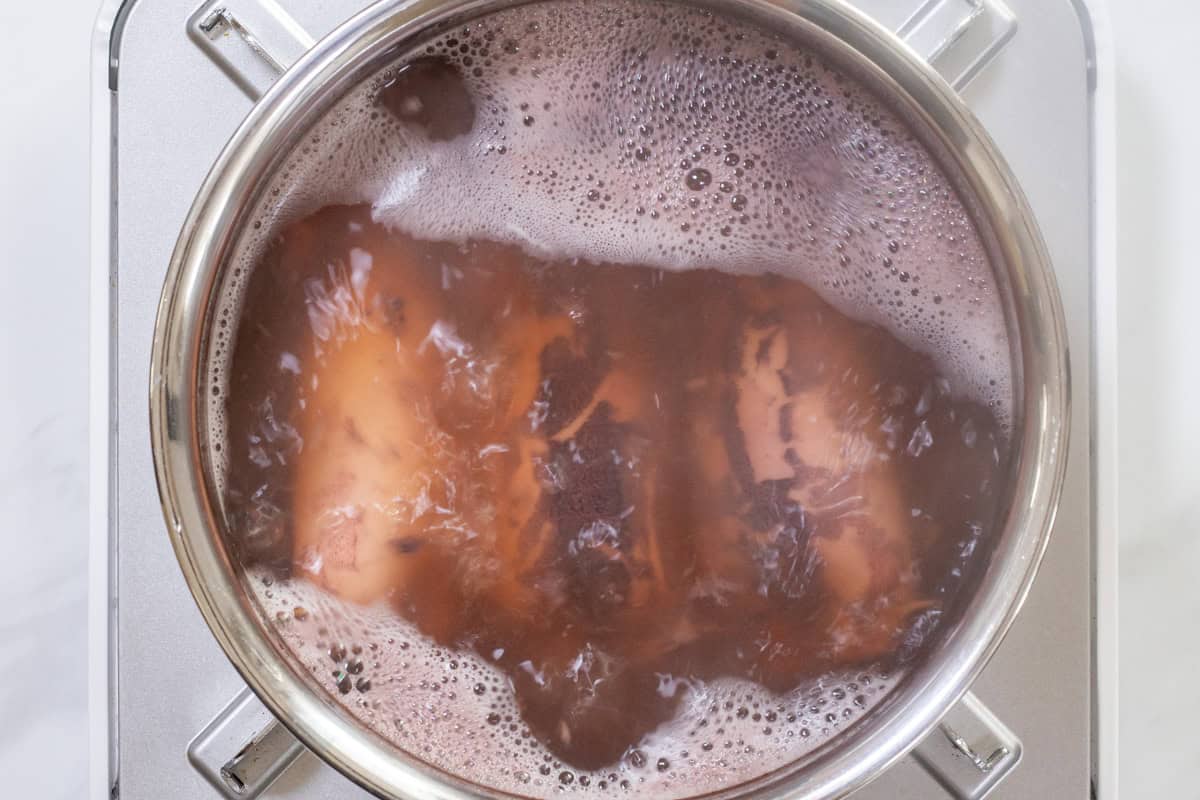
Step 5
Fill a pot with plenty of water and bring it to a boil. Once boiling, add the stuffed squid and cook over medium heat for 20 minutes. Then, drain the squid and rinse the pot.

Step 6
Add the seasonings (mirin, sugar, and soy sauce) and water (as specified in the recipe) to the pot and bring to a boil. Once boiling, return the squid, cover with an otoshi-buta, and simmer over medium heat for another 20 minutes. Your ikameshi is now ready.

Step 7
You can enjoy it freshly made, but letting it sit in the cooking liquid for a while allows the flavors to soak in even more deeply. Serve as is, or slice into bite-sized pieces according to your preference, and enjoy.
To store
You can store it in the refrigerator for up to 2 days.

If you try this recipe, I’d love to hear what you think. Please consider leaving a review and star rating in the comments below. If you enjoyed it, I’d really appreciate it if you shared it with your friends.
More squid recipes you'll love
FAQ
Yes, you can. The dish will just be a bit smaller, but it will still turn out great. Just adjust the amount of cooking liquid according to the size of your squid.
Recipe card

Ikameshi (Japanese Squid Stuffed with Rice)
Equipment
- otoshi-buta (drop-lid) (You can easily make one by following the instructions above. If that seems like too much trouble, you can simply use a regular lid instead.)
- toothpicks or bamboo skewers
Ingredients
- 3 cleaned squid (It is best to use ones with mantles, including fins, about 8 inches (20 cm) long. For instructions on how to prepare squid, please refer to the section above titled "How to Clean Squid.")
- 1 oz glutinous rice (sweet rice) (adjust depending on the size of your squid)
- 1 oz regular Japanese short-grain rice (adjust depending on the size of your squid)
- 1 tsp mirin (for the rice)
- 1 tsp soy sauce (for the rice)
Cooking liquid:
- 2 Tbsp mirin
- 2 Tbsp sugar
- 5 Tbsp soy sauce
- 2 cups water
Instructions
- Place a sieve over a bowl, add glutinous rice and short-grain rice, and rinse them with water. Repeat this process several times, changing the water each time.
- Soak the rinsed rice in a bowl of water for at least 1 hour. Then, drain it well and mix it with mirin and soy sauce.
- Rinse the inside of the cleaned squid under running water. Stuff each squid with the rice, filling it about one-third full. (The rice will expand as it cooks, so this is just the right amount.)
- Secure the open end of each squid with a toothpick (or bamboo skewer), weaving it through as if sewing, to keep the rice from spilling out while cooking.
- Fill a pot with plenty of water and bring it to a boil. Once boiling, add the stuffed squid and cook over medium heat for 20 minutes. Then, drain the squid and rinse the pot.
- Add the seasonings (mirin, sugar, and soy sauce) and water (as specified in the recipe) to the pot and bring to a boil. Once boiling, return the squid, cover with an otoshi-buta, and simmer over medium heat for another 20 minutes. Your ikameshi is now ready.
- You can enjoy it freshly made, but letting it sit in the cooking liquid for a while allows the flavors to soak in even more deeply. Serve as is, or slice into bite-sized pieces according to your preference, and enjoy.
Notes
- You can store it in the refrigerator for up to 2 days.

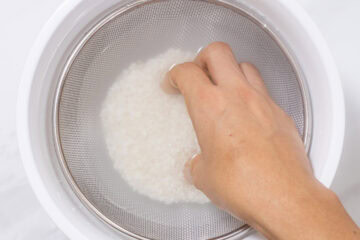
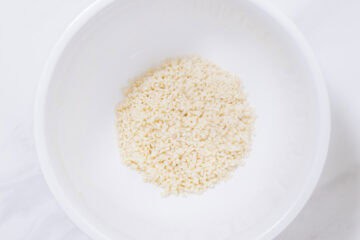
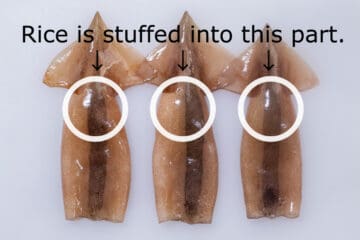
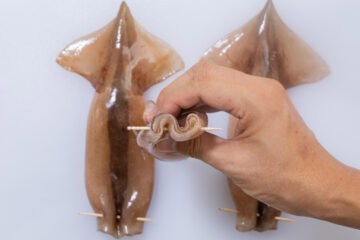

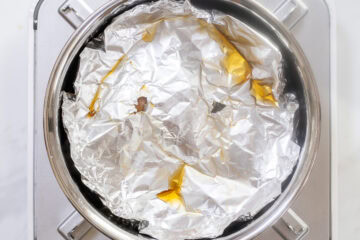





Leave a Rating and a Comment